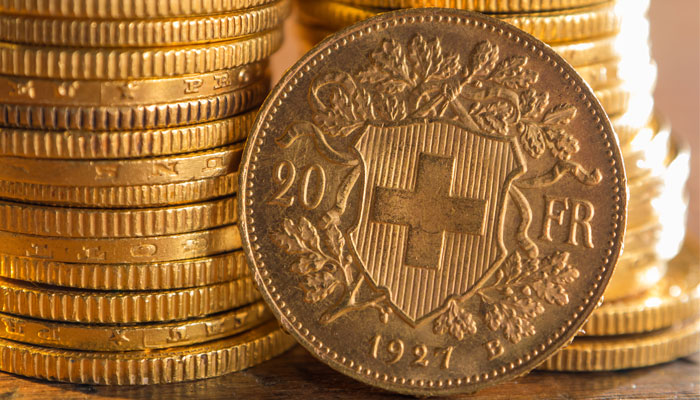An effective way to stack gold, either as a hedge or for financial security, is to buy low premium fractional gold coins. Some of the lowest premiums can be found in vintage gold coins. This include Pre-1933 US Mint gold coins as well as those that were minted throughout Europe in the late 19th and early 20th centuries.
Most coins of this era were intended for circulation and use in merchant trade. They are minted from the same 21.6k gold found in modern American Gold Eagles and Krugerrands. However, these fractional gold coins, such as the 20 Francs Gold Coins, often carry the lowest premiums when compared to modern bullion coins.
With uncertain economic times ahead and the anticipation of regulation in the cryptocurrency market there are many investors looking for a safer hedge.
British Gold Sovereigns
The Gold Sovereign from Great Britain is one of the most common vintage gold bullion coins. The British Gold Sovereign has been minted since 1817, but it’s history dates back much further.
Most incorporate the iconic image of King George slaying a dragon on the reverse, with a portrait of the reigning monarch at the time of minting gracing the obverse.
Each British Gold Sovereign coin contains .2354 troy ounces of gold, just shy of a 1/4 troy ounce. There are dozens of variations of the Gold Sovereign, minted in 22k, 91.67% gold.
Gold Sovereigns are widely recognized worldwide and are considered to be a very liquid bullion coin. Since each coin contains just shy of quarter ounce of gold it is easy to store a tremendous amount of wealth in a compact amount of space.
Gold 20 Francs LMU
The Latin Monetary Union (LMU) was an establishment of a gold backed “Euro” currency. The LMU was established in 1865 by treaty between France, Switzerland and Italy. Other countries eventually joined, including Belgium, Spain and others.
Each country was responsible for minting gold and silver coins that adhered to a standard based on the French Franc. The 20 Francs gold coins were minted by dozens of mints throughout Europe and other parts of the world by the millions spanning multiple decades. The United States even expressed interest in joining and developed several “pattern coins”, including the legendary Stella $4 gold coin. The Stella coin got its name from Latin translation of “star,” referring to the reverse.
The designs vary by country of origin, but most include a portrait of the reigning leader of the country at time of minting on the obverse. The reverse will also depend on the issuing country, but will often display the term “20 Francs” or some variation of it.
Some also include the local country currency as well. For example, the 20 Francs Coin from Italy also include “20 Lira”, the 20 Francs from Hungary includes the designation of “8 Forint”, Austria includes “8 Florin”, etc.
20 Francs Gold Coins have become very popular amongst stackers due to their low premiums and high liquidity. Each 20 Francs Gold Coin is minted from 90% gold and contains .1867 troy ounces of pure gold.
Popular 20 Francs Gold Coins include:
20 Francs Gold Helvetia from Switzerland
20 Francs Gold Rooster from France
20 Francs/20 Lire from Italy
Random 20 Francs
Gold Ducats from Austria & Hungary
The Gold Ducat was used as a trade coin. Trading merchants would use these gold coins to settle accounts for large transactions and international trade. The Ducat became popular with the Venetians when Venice was a popular trading destination. Many countries issued Gold Ducat coins.
Each Gold 1 Ducat coin contains roughly .1123 troy ounces of pure gold. Each coin is minted from 98.6% gold. Larger sizes were minted, including the 4 Ducat.

